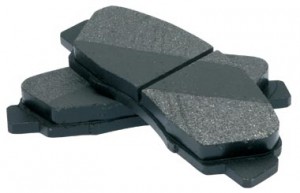The braking system in your car is one of the most important safety components, allowing you to slow down, stop, avoid potential accidents and keep your car stationary when parked. There’s a lot more to the braking system than just brake pads; it’s vital that you get the entire system checked regularly to ensure your family travels safely.
How do brakes work?
Brakes are part of your car’s hydraulic system, allowing you to slow down or stop the car using pressure and friction. As you step on the brake pedal, fluid in the brake system builds up pressure against the brake pads and/or shoes. These pads and shoes then grab onto the metal rotors and drums in the wheel assemblies, effectively slowing or stopping the car. The emergency brake system usually applies the brakes to the rear wheels mechanically or electronically when you activate the hand brake or foot brake.
Hydraulic system
A hydraulic system is used for most modern car brake systems. When you apply the brakes, the power-brake booster multiplies pedal pressure and transfers this pressure via the brake fluid to the brake pads. Since liquids don’t compress under pressure, the brake fluid can instantly transfer braking power.
Braking system types
Most cars use disc and drum brake assemblies in their brake systems. These days car are fitted with disc brakes on all four wheels; however, some cars (such as light commercial models) still use a drum brake assembly on the rear wheels. As safety performance awareness increases, many car manufacturers are fitting anti-lock brakes (ABS) – a computer-controlled system – as an added component to prevent wheel lockup and skidding. ABS usually works in conjunction with other vehicle systems such as stability control.
Braking system components
There are several parts to a car’s brake system including brake pedal, power booster, master cylinder, disc calliper, wheel cylinder assembly, disc pads and shoes, drums, disc rotors, brake-fluid lines and brake fluid, emergency brake or hand brake and, depending on vehicle make and model, electronic modules and ABS control unit. All these need careful and regular maintenance.
Brake repairs
Our experienced technicians conduct a comprehensive inspection of your car’s braking system components and can advise you on any necessary repairs or service items. This ensures the best possible car performance and safety. We use only the most trusted brands, such as Bendix, for parts and all work is backed by our industry-leading Australia-wide guarantee.
Is your car due for a checkup?
If your car is due for a service or needs its brakes checked, then call us on 03 8682 8909 to book a service.
Types of Break & Clutch Repairs we do:
- Front And Rear Disc Brake Pad Replacement or Reconditioning
- Brake Cylinder Replacement
- Brake Master Cylinder Replacement Or Reconditioning
- Brake Caliper Overhaul
- Brake Fluid Flushing ,Replacing
- Brake Adjustment
- Brake Pipe Replacement
- Brake Shoe Replacement
- Clutch and Pressure Plate Replacement
- Thrust Bearing Replacement
- Master & Slave Cylinder Replacement
- Clutch Flywheel Replacement or Reconditioning








